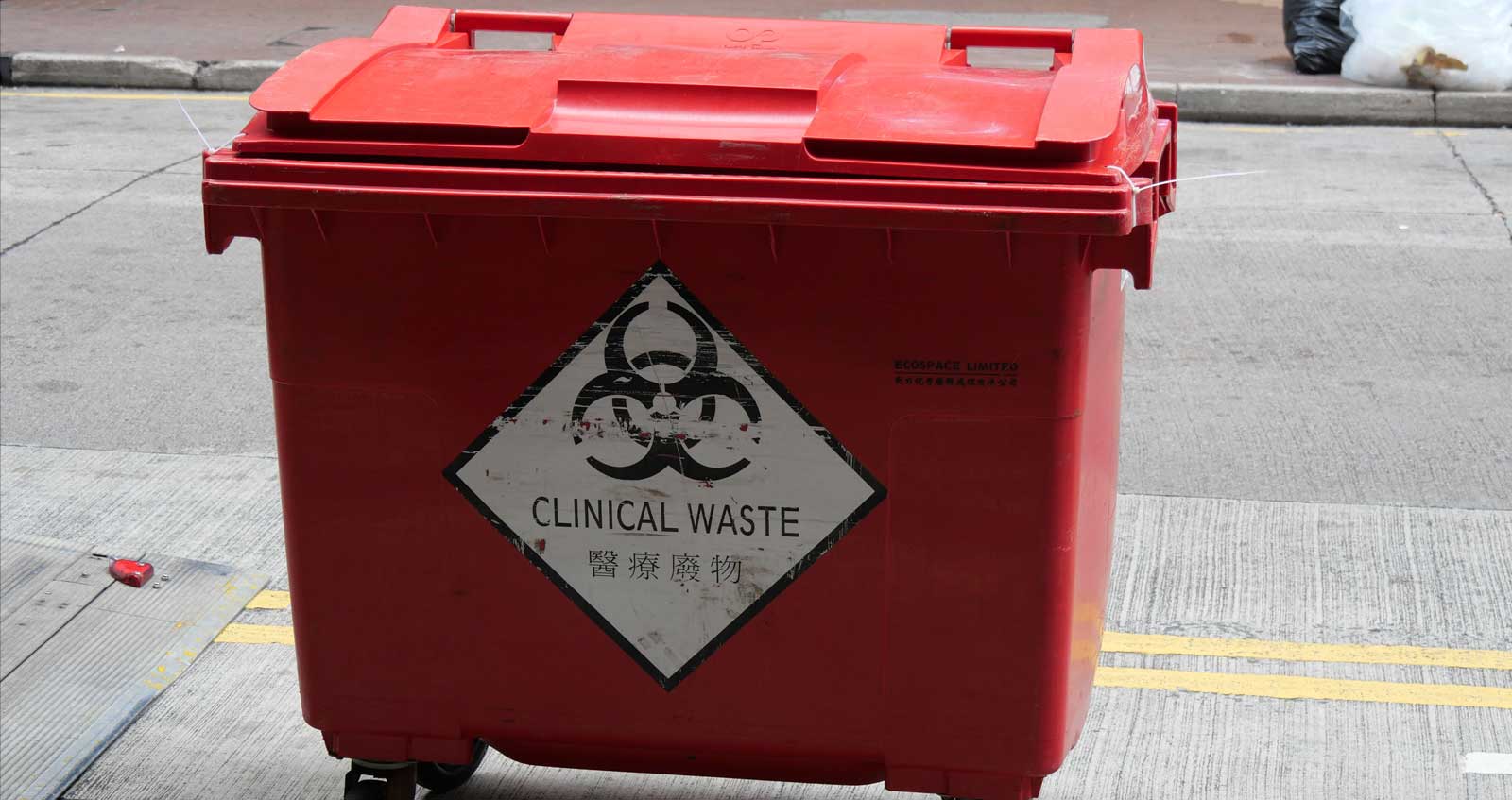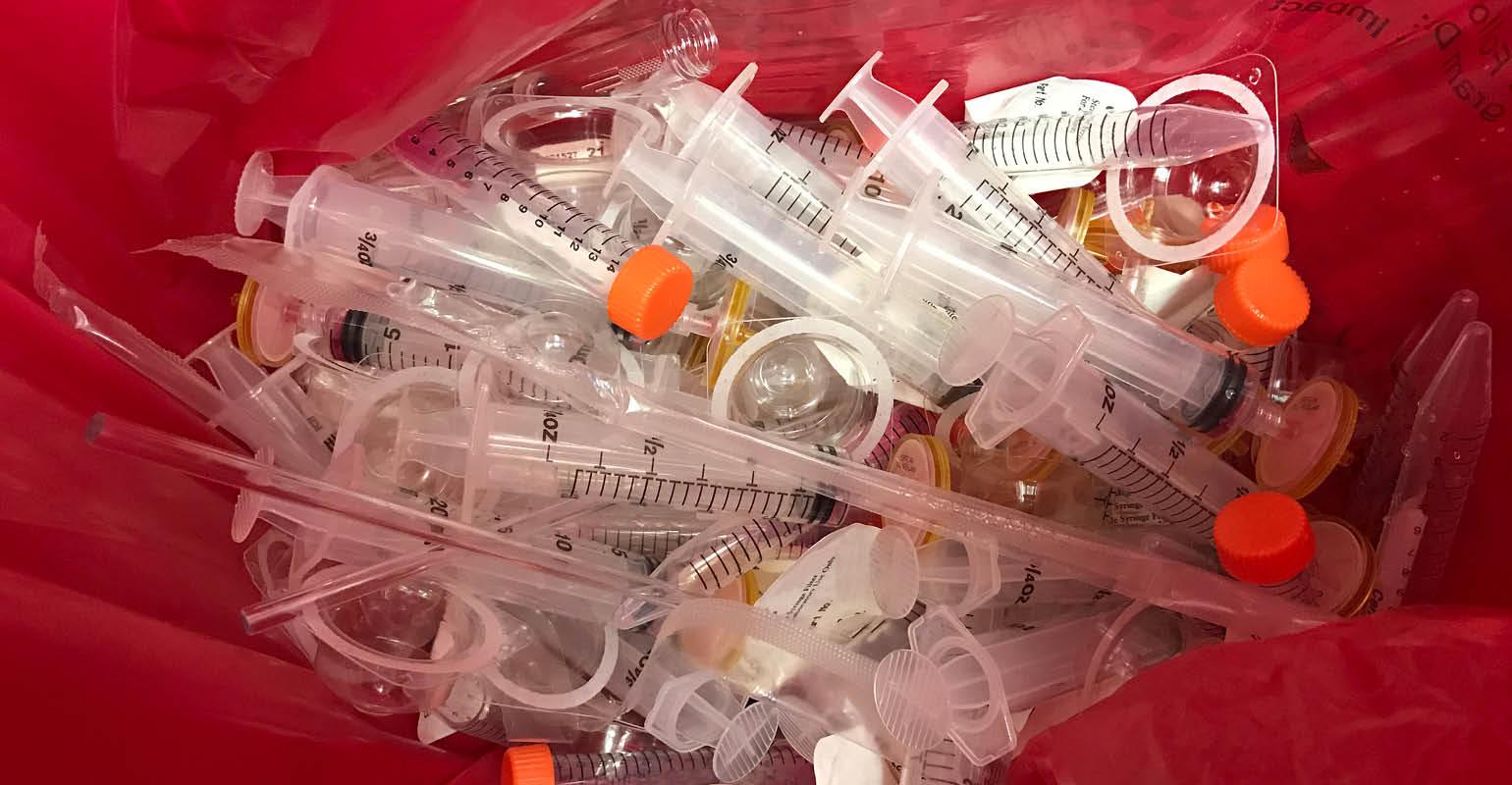Protecting Well-Being: Unveiling the Essence of Expert Medical Waste Removal
Protecting Well-Being: Unveiling the Essence of Expert Medical Waste Removal
Blog Article
Stay Ahead of Laws: Specialist Advice on Medical Waste Disposal
In a world where the health care sector is constantly developing, it is critical for clinical facilities to stay ahead of policies when it concerns the appropriate disposal of clinical waste. With rigid standards and constant governing adjustments, it can be testing to browse the intricacies of this procedure. Nonetheless, with experienced advice, facilities can ensure compliance and mitigate risks associated with improper waste disposal. From comprehending the different categories of clinical waste to carrying out the ideal collection and segregation methods, this discussion will certainly supply useful insights and workable ideas to assist facilities remain in advance of policies in the ever-changing landscape of medical garbage disposal.
Comprehending Medical Waste Categories
Comprehending clinical waste classifications is important for correct disposal and management in medical care facilities. Medical waste describes any waste created by healthcare activities that might pose a danger to public health or the atmosphere. It is critical to categorize clinical waste properly to ensure its risk-free handling, treatment, disposal, and transport.
There are several categories of clinical waste that medical care centers need to be aware of. The most usual groups include transmittable waste, pathological waste, sharps waste, pharmaceutical waste, and chemical waste. Each group has specific guidelines and guidelines for its correct monitoring and disposal.
Pathological waste refers to human tissues, body organs, or body components that call for unique handling and disposal. Pharmaceutical waste comprises expired, unused, or infected medicines that require cautious handling and disposal.
Staying Up-To-Date With Regulatory Changes
Remaining existing with regulative modifications is critical for medical care facilities to guarantee compliance and correct monitoring of medical waste disposal. medical waste removal service. With regulations frequently advancing, it is necessary for health care facilities to remain updated to avoid fines, fines, and possible damage to the environment and public wellness
To stay ahead of regulative changes, medical care facilities ought to develop a system for tracking and monitoring updates. This can be done by signing up for regulatory e-newsletters, going to meetings and workshops, and proactively taking part in industry organizations. Additionally, centers should assign a team member or group accountable for remaining informed and sharing information to appropriate stakeholders.
Regular communication with governing agencies is likewise important. Health care centers should develop partnerships with neighborhood, state, and federal agencies to ensure they recognize any adjustments in policies that might influence their waste management methods. This can be done via regular meetings, involvement in public remark periods, and positive interaction with governing agencies.
Furthermore, medical care facilities need to think about partnering with waste monitoring business that concentrate on medical garbage disposal (medical waste disposal services with WasteX). These business are commonly fluent in the most up to date policies and can supply support and assistance to make certain compliance
Implementing Proper Collection and Segregation Techniques
To properly take care of clinical garbage disposal, medical care centers must establish proper collection and partition approaches according to governing standards. Applying these approaches guarantees the risk-free handling and disposal of potentially unsafe materials, safeguards the environment, and minimizes the risk of infections and injuries to healthcare employees and the public.
Correct collection and segregation methods involve using marked containers and classifying systems. Health care facilities should give plainly identified containers for different sorts of clinical waste, such as sharps, contagious waste, pharmaceutical waste, and non-hazardous waste. These containers ought to be color-coded and plainly significant to prevent confusion and advertise simple identification.
In addition, health care facilities need to educate their staff on the correct procedures for gathering and segregating clinical waste. This includes educating them on the various kinds of waste, the appropriate containers to make use of, helpful hints and the value of following regulations and standards. Regular training sessions and refresher course programs should be carried out to find out here now guarantee that team member continue to be up-to-date on best methods.
Additionally, medical care facilities need to establish a system for normal collection and disposal of medical waste. This might entail partnering with certified waste monitoring business that concentrate on medical garbage disposal. These firms will make certain that the collected waste is moved and taken care of in compliance with regulative needs.
Choosing the Right Disposal Techniques

Incineration is among one of the most typical and reliable approaches for disposing of certain kinds of medical waste, such as pathological waste and sharps. It involves the regulated burning of waste at heats, reducing it to ash. However, incineration can release harmful my review here pollutants into the air and add to air contamination.

Chemical therapy entails the usage of chemicals to neutralize the waste and disinfect. Microwave treatment uses microwave energy to heat and disinfect the waste.
Ensuring Compliance Through Documentation and Training
After carefully considering the appropriate disposal methods for medical waste, medical care centers have to make certain conformity with guidelines and lessen environmental impact by implementing effective paperwork and training treatments. This step is essential in maintaining a sustainable and safe environment for both healthcare employees and the public.

Healthcare workers who handle medical waste should receive appropriate training on waste segregation, handling, and disposal treatments. By providing comprehensive training, healthcare centers can encourage their team to make educated decisions and reduce the risk of improper waste disposal.
Conclusion
Finally, remaining in advance of guidelines in medical waste disposal is crucial for medical care centers. medical waste removal near me. Recognizing the different categories of clinical waste, remaining updated with regulatory adjustments, carrying out appropriate collection and partition approaches, selecting the appropriate disposal approaches, and making sure conformity with documentation and training are all crucial steps. By complying with these guidelines, medical care organizations can effectively get rid of and handle of medical waste in a liable and risk-free fashion
From comprehending the different classifications of medical waste to applying the best collection and partition techniques, this discussion will supply actionable ideas and valuable insights to aid facilities remain ahead of policies in the ever-changing landscape of clinical waste disposal. - medical waste disposal services with WasteX
The most common classifications consist of contagious waste, pathological waste, sharps waste, pharmaceutical waste, and chemical waste. Medical care centers need to provide clearly labeled containers for different types of medical waste, such as sharps, infectious waste, pharmaceutical waste, and non-hazardous waste. Healthcare facilities ought to establish an extensive system to tape-record and track all elements of medical waste disposal, including types of waste generated, quantities, and disposal methods used. Healthcare employees that take care of medical waste ought to receive appropriate training on waste segregation, handling, and disposal treatments.
Report this page